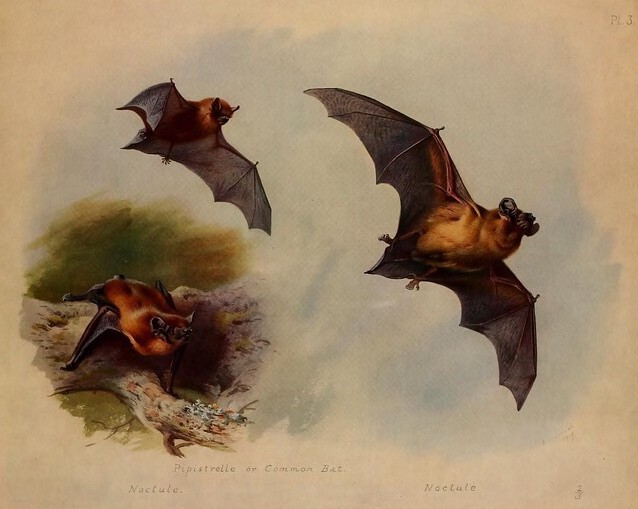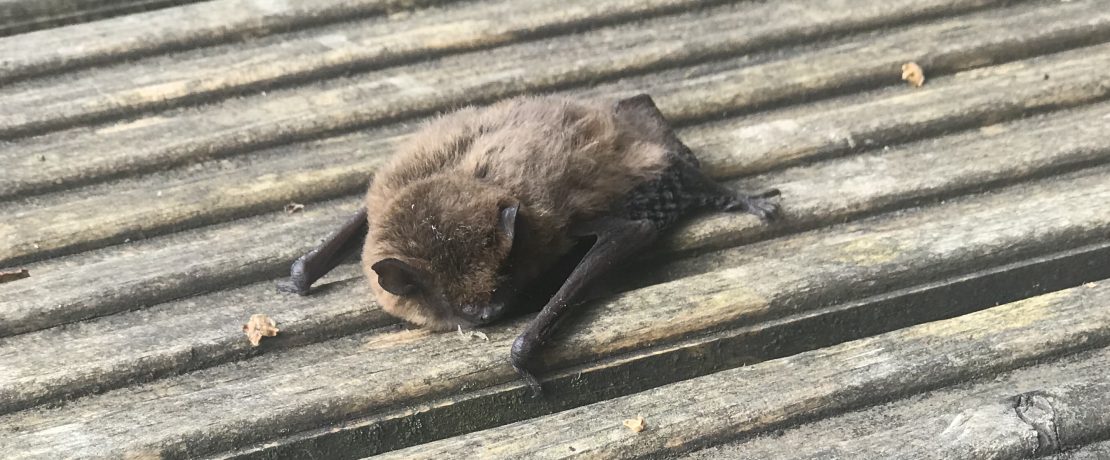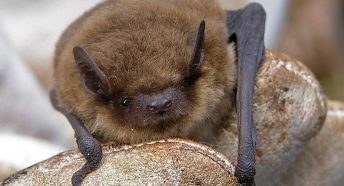How to (safely) rescue a bat
Our Chair Debbie McConnell’s idyllic evening in the garden is interrupted by the arrival of a visitor who is clearly unwell….
The day was drawing to a close and our garden was looking very green and floral. The water lily was in full flower, the air buzzed with the activities of the local honey supplier and the veggies were doing their thing and fighting caterpillar and slug. Our daughter was distracted from this bliss and her book by movement on the ground. A bird? A leaf? She peered at it – a bat!! Why was it on the floor? It looked weak and wobbly; certain death awaited from a cat or corvid unless it could reach the open sky again.
The Bat Conservation Trust website confirmed her fears: a downed bat is not good. Get the flier to safety: pick it up gently wearing gloves. Tick. She is a vet and knows they can carry rabies so this is essential. Lay it on a clean tea towel inside a cardboard box – a shoebox is ideal . Tick. Include a milk bottle top of water. Tick. Close up leaving a small air slit. Tick. This necessitated the co–operation of “our” mini spitfire who was not reassured by this interference. Its chattering and clicking almost sounded like a reprimand. Then call them to arrange a visit.
Its fur was a lovely shade of chestnut with black , pricked up ears, a black nose, the most beautiful wings of translucent skin, tiny clawed fingers and a short but delicate tail. The body was about 3 cms long by 2 cms wide but when stretched out, those magnificent wings of 20 cms or so span demonstrated engineering at its finest. We delivered the bat and its temporary abode to a cool, dark place before contacting “bat rescue”.
Sam from the from the Lancashire branch of the Charity knocked on our door an hour or so later. She opened up the box and smiled as the pipistrelle – for that is what he was – attempted his final great escape. Holding him gently in white gloved hands and avoiding those tiny but razor sharp teeth, she sexed him and gave him a “once over”. He was probably an adult but could be a juvenile, underweight and too cold. Mammals like bats, whales and us have a constant, warm blood temperature; failure to maintain it is life-threatening. She showed us the wings by gently opening them out. Perfect!! Phew! The fully “connected” wing bones announced he was no longer a “pup”.

Sam explained the joy of these wonderful animals, a protected species. Self-preservation kicked in his calmness; pipistrelles can even “play dead” too to fool the enemy. His body shape and the visibility of bones under his fur demonstrated starvation. Oh dear!! In the summer England’s native bats should be plump and in good condition. Their food – primarily insects – is plentiful. Could he have chased a moth into a building only to find his exit route closed off? She speculated his escape and emergency landing in our garden when his fuel just ran out. A proposal for his immediate removal to their “hospital” met with our unanimous delight. Warmth, water and hand feeding with a pipette of protein mush adored by their patients would be restorative, she voiced with confidence. She would then return him to us for release into his territory.
Watch this space for the next episode – the return of the bat!







